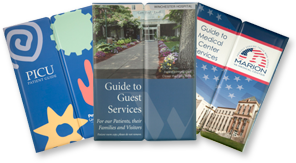Written by: Ed Stannard, Hartford Courant
(TNS) – More patients who come to hospital emergency departments are waiting for hours to be admitted, often on gurneys in the hallways, and more are leaving before they even get seen by a doctor, according to two studies from the Yale School of Medicine.
The long delays in moving a patient from the ED to a hospital bed, or even in getting an ambulance to bring them home or to another facility, is creating the major backup, the studies say.
“Downstream harms include increased medical errors, compromises to patient privacy, and increased mortality,” said one study about the wait to be admitted as an inpatient, which is called boarding. “Boarding is a key indicator of overwhelmed resources and may be more likely to occur when hospital occupancy exceeds 85% to 90%.”
“It is a crisis,” said Dr. Gail D’Onofrio, an emergency medicine and addiction specialist at Yale New Haven Hospital.
“We are at unprecedented numbers of patients who are boarding,” she said. “It’s very, very unusual that we’re not boarding 50 people, sometimes up to 100. Last week when I worked it was over 100 when I walked in. But we sort of seem to be normalizing it now,” meaning it has become a persistent issue nationwide.
“But we’ve been particularly just inundated with admitted patients in every aspect of our Emergency Department,” D’Onofrio said. “And half of our Emergency Department seems to be taken up, or a large portion, by patients with mental health disease, overflow from our crisis intervention unit, waiting for placement or some other divine intervention.”
“This is not an ED management issue,” said Dr. Arjun Venkatesh, an associate professor of emergency medicine at Yale School of Medicine and an author of the studies, in a statement. “These are indicators of overwhelmed resources and symptoms of deeper problems in the health care system.”
The studies were both published Sept. 30 in JAMA Network Open.
The Joint Commission, which accredits hospitals, recommends boarding time be limited to four hours, but the Yale researchers found that when an emergency department was at 85% capacity or higher, the median boarding time was 6.58 hours. An independent national health care accrediting body, has recommended that boarding time not exceed four hours, according to the study.
The study was conducted between January 2020 and December 2021.
D’Onofrio said the patients coming into the Emergency Department are genuinely sick and needing urgent care.
“I think that access to care is really difficult right now, for everybody,” she said. “Even if you have insurance, access is difficult, but if you don’t, for more vulnerable populations, the ED is really often the only place to go.”
She said Yale New Haven has opened after-care clinics to provide a place for patients to get continuing care after leaving the emergency department, and set up a temporary ED outside the hospital.
D’Onofrio said reducing the number of people coming to the ED isn’t a solution.
“The answer is to stop using the Emergency Department as an inpatient unit,” she said. “And let us continue to function the way we do, taking incoming, assessing them, stabilizing them, resuscitating them if they need be, and then to make sure they get to the appropriate place. … That’s our job.”
Much of the increased crowding is a result of reduced staffing among nurses, ambulance drivers and others because of the COVID-19 pandemic, said Dr. Jonathan Bankoff, chairman of Middlesex Health’s Department of Emergency Medicine.
“The patients that we see require a little bit more care,” he said. “We’re using more infectious disease precautions, physicians and nurses,” which may increase the time a patient stays in the ED from three to 3½ hours.
“And those patients that are really sick that get admitted — they’re staying in the hospital a little bit longer,” Bankoff said. “And as a result, there are fewer beds upstairs for the next round of patients that need to be admitted. And then everything kind of runs downhill from there.”
When patients are boarding in the ED, they are taking up beds that other patients need, so more are waiting to see a doctor or nurse, and some end up leaving.
“They’re relegated either to a hallway or they wait a longer time in the waiting room, and then that leads to frustration and some of those patients then leave,” Bankoff said.
He said Middlesex Health generally has kept the number of patients who leave at the national benchmark of 1%, but that it is closer to 1.8% or 2%, “and on certain days, individual days, we might see even a 3 or 4% [left without being seen] rate, which is considerably worse than we’ve ever seen before,” Bankoff said. “And I can’t attribute all of that to crowding, but that is certainly a component of that concern.”
He mentioned “a more recent phenomenon, which is not again entirely COVID-related but indirectly, is we’re having more trouble getting them out back to skilled facilities because of limited ambulances, whether that’s lack of paramedic staffing or EMT staffing or just not enough ambulances to meet the demand to go back to facilities.”
Both boarders and those waiting to be discharged “dwell in our department for extra hours,” Bankoff said.
“And we only have a certain number of beds and a certain number of staff, and if our beds are full and our staff are occupied, then those people that need us can’t get in,” Bankoff said. “They’re waiting in the waiting room and they get frustrated and they end up leaving, and just because they leave and we didn’t see them doesn’t mean they weren’t sick.”
Those who can be discharged but are waiting for an ambulance are “still in our care. They’re still in our rooms. We can’t put them out on the ambulance deck waiting for a ride and can’t put them back in the waiting room. … They’re occupying space. They’re still our patients to care for. We still have nurses that need to provide care, and that’s taking those nurses and those beds away from other patients.”
The second study found the rate at which people left an ED without being seen increased from 1.1% to 2.1% between January 2017 and December 2021. The worst hospitals had a rate of 10%, according to the study.
Dr. James Cardon, chief clinical integration officer of Hartford HealthCare, said its hospitals have tried to manage the Emergency Department population by creating GoHealth urgent care centers in 23 locations in nearby towns and cities.
“This is not a new phenomenon,” Cardon said. “It’s really been something that’s been building and, and we have anticipated that and some years ago now really recognized that there was an ability for us to create some capacity in our EDs by finding alternative sites to care for those low level visits that don’t really usually result in a hospitalization.”
He said the centers have recorded 460,000 visits per year.
“The question is, in fact, are we able to demonstrate that we’ve seen a decrease in in ED visits, and unquestionably so. … We’ve been able to decrease our low levels by 10%,” Cordon said.
©2022 Hartford Courant. Visit courant.com. Distributed by Tribune Content Agency, LLC.
This article appeared on Emergency Management News and is shared with consent: https://www.govtech.com/em/safety/er-patients-waiting-hours-in-hallways-studies-say







